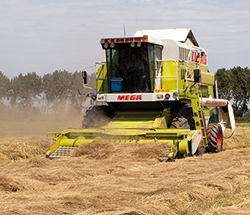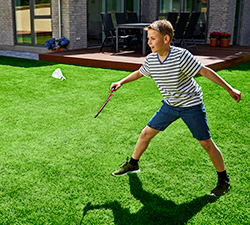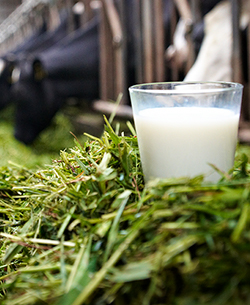
Europe experiences another below-average harvest of grasses and clovers
Seed producers in northern Europe had a mixed season. Early spring was good all round and in Denmark the good growing weather lasted till harvest. Unfortunately the weather broke in Denmark just as the harvest began. An unstable mixture of sunshine and rain made harvesting difficult. In the Netherlands the latter part of the growing season was very dry, resulting in a low filling of seeds.
03/10/2017
Northern hemisphere harvests below average
 The species that suffered most in Denmark was white clover. Poor pollination and unsuitable harvest weather reduced the yield almost by half. Yields were also down in smooth-stalked meadow grass, tall fescue and perennial ryegrass. The only species to do well was red fescue. An early harvest produced a yield just above average.
The species that suffered most in Denmark was white clover. Poor pollination and unsuitable harvest weather reduced the yield almost by half. Yields were also down in smooth-stalked meadow grass, tall fescue and perennial ryegrass. The only species to do well was red fescue. An early harvest produced a yield just above average.
Harvest weather was better in the Netherlands. But it came at the end of a long dry period that led to a low yield in perennial ryegrass.
In North America, the growers in the west have recorded a below-average grass yields. Further north in Canada, the harvest was good for alfalfa but poor for perennial ryegrass.
Early start to spring buying season
The spring buying season started early. Demand was so high for turf and forage seed, March was a record month for our shipping department.
Cold weather during the second half of April and early part of May brought the market to an early close. Nevertheless 2017 will be remembered as a good year for grass and clover consumption.
Increased demand for turf
 Demand for turf seed has been good in both the professional and consumer markets. An improving economic situation, with more infrastructure and house-building projects, has driven demand for turf grasses. Even in Southern Europe, where economies are improving at a slower rate, demand was up for turf grass.
Demand for turf seed has been good in both the professional and consumer markets. An improving economic situation, with more infrastructure and house-building projects, has driven demand for turf grasses. Even in Southern Europe, where economies are improving at a slower rate, demand was up for turf grass.
Seed shortages drove up prices for smooth-stalked meadow grass and hard and tall fescue. Seed imports from the USA were low, held back by limited availability and an unfavourable USD exchange rate. And following the disappointing harvests in Denmark, the Netherlands and North America, the balance between supply and demand is tight.
Significant rise in milk prices
 Rising milk prices in western Europe have lifted forage consumption. Since the multiplication acreage for forage perennial ryegrass was adjusted for the last harvests, with unfortunately for harvest 2017 a lower than average yield and good consumption we see a very healthy balance for recommended perennial ryegrass varieties. Tall fescue is in short supply with limited imports coming in from America where prices are high. Prices for timothy, however, are weak due to good availability from Canada. But this will change because the acreage is declining and spring sowings have not established well.
Rising milk prices in western Europe have lifted forage consumption. Since the multiplication acreage for forage perennial ryegrass was adjusted for the last harvests, with unfortunately for harvest 2017 a lower than average yield and good consumption we see a very healthy balance for recommended perennial ryegrass varieties. Tall fescue is in short supply with limited imports coming in from America where prices are high. Prices for timothy, however, are weak due to good availability from Canada. But this will change because the acreage is declining and spring sowings have not established well.
Another species with a weak price is meadow fescue. But festulolium, DLF's exclusive species, was in good demand, especially in eastern Europe where its advantages are much appreciated. And prices for Italian and westerwoldicum ryegrasses have firmed in the wake of disappointing harvests.
 The move towards home-grown protein is driving demand for clovers and alfalfa. Alfalfa and red clover multiplication acreages have increased in several countries. At the time of writing, we're not sure what the actual harvested acreages are, but yields in France seem to be below average.
The move towards home-grown protein is driving demand for clovers and alfalfa. Alfalfa and red clover multiplication acreages have increased in several countries. At the time of writing, we're not sure what the actual harvested acreages are, but yields in France seem to be below average.
Luckily we have a strong portfolio of alfalfa varieties for a wide range of markets. For farmers who want to be self-sufficient in protein, we offer a complete forage solution of grass, clover and alfalfa.
As always, local knowledge is invaluable. It often proves to be much more useful than this kind of broad market summary. If you'd like to know more about seed prices and availability where you are, talk to your local DLF representative.
Or you could meet us at the European Seed Association's Annual Meeting in Riga from 7th to 10th October. If you are going to Riga, we'd love to hear your thoughts on the world seed market.
